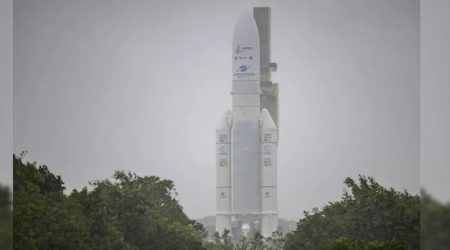Signs Of Life On Planet Bigger Than Earth Found By Scientists
In a groundbreaking discovery, scientists have found evidence of life on a planet twice the size of Earth, orbiting a star similar to the Sun. This extraordinary finding has left the scientific community buzzing with excitement, as it opens up new possibilities for the search for extraterrestrial life. In this article, we will delve into the details of this remarkable discovery and explore its implications for our understanding of the universe.
Located beneath the constellation Leo, K2-18b is a gas giant planet that orbits a star called K2-18, roughly half the size of the Sun. With a radius of approximately 2.6 times that of Earth, K2-18b is a behemoth of a planet, making it an intriguing subject for study. Its size and proximity to its star make it an ideal candidate for hosting life, and scientists have been eager to investigate its potential for supporting living organisms.
Using the James Webb Space Telescope (JWST), a team of scientists led by Dr. Maria Zuber, a renowned astrobiologist, detected a gas in the atmosphere of K2-18b that could be produced only by living organisms. The gas, dimethyl sulfide (DMS), is a potent indicator of biological activity, and its presence in the planet’s atmosphere has sparked excitement among scientists.

DMS is a volatile organic compound that is produced by phytoplankton, tiny marine plants that form the base of the ocean’s food chain. On Earth, DMS is released into the atmosphere through the breakdown of phytoplankton cells, where it plays a crucial role in regulating the planet’s climate. The detection of DMS in K2-18b’s atmosphere suggests that similar biological processes may be occurring on this distant planet.
The discovery of DMS on K2-18b has significant implications for the search for extraterrestrial life. While the presence of DMS does not necessarily prove the existence of life, it is a strong indication that biological processes are occurring on the planet. The finding also highlights the importance of studying the atmospheres of exoplanets, as they can provide valuable insights into the potential for life beyond Earth.
Launched in 2021, the JWST is a powerful space observatory designed to study the universe in infrared light. With its unparalleled sensitivity and resolution, the JWST has revolutionized our understanding of the cosmos, revealing breathtaking images of space and uncovering hidden secrets of the universe. The JWST’s detection of DMS on K2-18b is a testament to its capabilities and demonstrates its potential for making groundbreaking discoveries.

The discovery of DMS on K2-18b has opened up new avenues for research, raising questions about the nature of life on this distant planet. Scientists are eager to further investigate the planet’s atmosphere, searching for other signs of biological activity, such as the presence of oxygen or methane. The finding also highlights the importance of continued exploration of the universe, as we may yet uncover other secrets of life beyond Earth.
The discovery of signs of life on K2-18b is a momentous occasion, marking a significant milestone in our quest to understand the universe. As we continue to explore the cosmos, we may yet uncover other secrets of life beyond Earth, challenging our understanding of the universe and our place within it. The search for extraterrestrial life is an ongoing journey, and this remarkable finding is a reminder of the wonders that await us in the vast expanse of space.














Leave a Reply